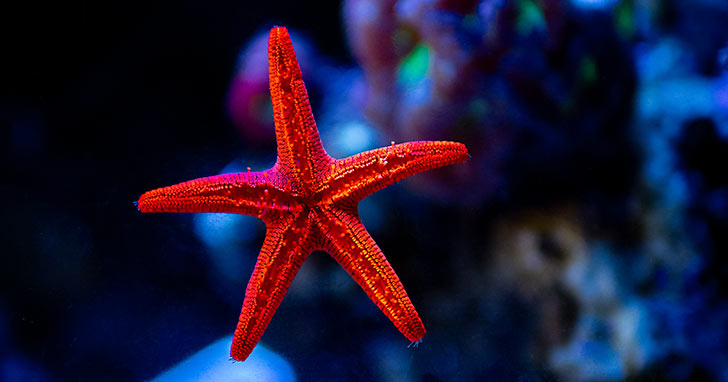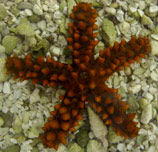
Echinoderms: Part 2 - Unique CharacteristicsMichael Paletta - Guest Author All echinoderms share several common characteristics despite very dissimilar outward appearances differentiating them from all other members of the animal kingdom. First, they all possess five-part radial symmetry around a central disk. Second, they all possess a very unique water vascular system (vascular system based on water). These unique characteristics distinguish echinoderms from other animals in the animal kingdom. 5-part radial symmetry -
Water-based vascular system -
Echinoderms are also characterized by a unique water-based vascular system possessed by no other animal. This highly specialized system not only allows them to transport food and water along the outside of their bodies, but it also allows for other nutrients and gases to be transported as well. Their hydro-vascular system has evolved to the point that it provides a means of locomotion simply by changing the water pressure within their tube feet. This system is also unique in that water within this vascular system is open to the outside, that is, it is not self-contained. This peculiar characteristic may partly account for why these animals are so sensitive to rapid changes in water chemistry and may go into osmotic shock when salinity or ions in their environment are changed rapidly. This water vascular system is controlled by a sieve plate (the madreporite), the dark colored structure on the upper surface of most sea stars. Water-based vascular system -
Biography
Michael Paletta is the author of two books, "The Modern Marine Aquarium" and "Ultimate Reefs," and has acted as a consultant with the National Aquarium in Baltimore and the Pittsburgh Zoo Aquarium. |
||||||||
|
|


 This is the most obvious common trait shared by members of this phylum. This symmetry is based on a five-part system where a central structure is surrounded by five equal parts. This is especially apparent in starfish, brittle stars and serpent starfish where the five arms or a multiple thereof are arranged around a central disk. This radial symmetry is not as apparent in sea urchins or sea cucumbers, but when these animals are closely examined or dissected, it becomes readily apparent that their body is arranged based on this 5-part symmetry. Due to this particular body arrangement, these animals do not possess what we would regard as a head. They do not possess anything close to a central nervous system and lack eyes or other means of dealing with complex stimuli. Instead, they possess a very simple combination of chemo and tactile receptors. Echinoderms are able to differentiate between light and dark and have a very keen sense of chemoreception as indicated by their relatively rapid movement when food is introduced into an aquarium.
This is the most obvious common trait shared by members of this phylum. This symmetry is based on a five-part system where a central structure is surrounded by five equal parts. This is especially apparent in starfish, brittle stars and serpent starfish where the five arms or a multiple thereof are arranged around a central disk. This radial symmetry is not as apparent in sea urchins or sea cucumbers, but when these animals are closely examined or dissected, it becomes readily apparent that their body is arranged based on this 5-part symmetry. Due to this particular body arrangement, these animals do not possess what we would regard as a head. They do not possess anything close to a central nervous system and lack eyes or other means of dealing with complex stimuli. Instead, they possess a very simple combination of chemo and tactile receptors. Echinoderms are able to differentiate between light and dark and have a very keen sense of chemoreception as indicated by their relatively rapid movement when food is introduced into an aquarium.